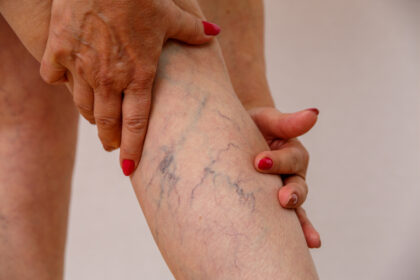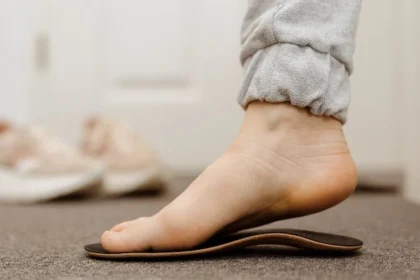Chronic pain affects millions of people worldwide, often reducing mobility, disrupting daily activities, and impacting mental health. While medications can offer temporary relief, physical therapy (PT) is a long-term, sustainable solution that not only reduces pain but also addresses its root causes.
This detailed guide explores how physical therapy helps manage long-term pain, the techniques used, and what you can expect from a personalized PT program.
Understanding Long-Term Pain
🔹 What Is Chronic Pain?
Chronic pain is pain that lasts longer than 12 weeks, often persisting even after the initial injury or condition has healed. It can stem from:
- Arthritis
- Fibromyalgia
- Back or neck injuries
- Post-surgical pain
- Nerve damage (neuropathy)
- Joint disorders
🔹 Why Physical Therapy?
Unlike painkillers that only mask symptoms, physical therapy works on restoring function, building strength, improving flexibility, and ultimately reducing dependence on medication.
Goals of Physical Therapy in Chronic Pain Management
- Reduce Pain: Through exercises, manual techniques, and therapeutic modalities
- Improve Mobility: Address joint stiffness, muscle tightness, and poor posture
- Strengthen Muscles: Supporting weak areas to prevent overuse and reinjury
- Restore Function: Regain independence in daily tasks
- Educate the Patient: Teach techniques to manage pain at home
Key Techniques Used in Physical Therapy
🔹 Manual Therapy
Hands-on techniques performed by the therapist to:
- Mobilize joints
- Reduce muscle tension
- Improve circulation
- Break up scar tissue
🔹 Therapeutic Exercises
Tailored movement routines that:
- Strengthen weakened muscles
- Increase flexibility
- Enhance balance and coordination
- Promote joint stability
🔹 Postural Training
Correcting posture can relieve stress on certain muscles and joints, especially for neck, back, and shoulder pain.
🔹 Neuromuscular Reeducation
Helps retrain muscles and nerves to function properly after injury or surgery, especially useful in nerve-related pain.
Physical Therapy Modalities for Pain Relief
| Modality | Purpose |
|---|---|
| TENS Therapy | Blocks pain signals to the brain using mild electrical current |
| Ultrasound Therapy | Increases blood flow and speeds tissue healing |
| Heat Therapy | Relaxes muscles, improves flexibility |
| Cold Therapy | Reduces inflammation and numbs acute pain |
| Dry Needling | Releases tight muscle knots and relieves deep pain |
Role of Physical Therapy in Specific Conditions
🔹 Back and Neck Pain
- Strengthening core muscles
- Spinal mobilization
- Ergonomic training
🔹 Osteoarthritis
- Joint-specific strengthening
- Range-of-motion exercises
- Pain management education
🔹 Fibromyalgia
- Low-impact aerobic exercises
- Stretching and relaxation routines
- Breathing techniques
🔹 Sports or Surgical Injuries
- Gradual return-to-function programs
- Scar mobilization
- Functional movement training
Benefits Beyond Physical Healing
🔹 Improved Mental Health
- Reduces anxiety associated with chronic pain
- Increases confidence and motivation through progress
🔹 Better Sleep Quality
- Less pain at night allows for deeper, uninterrupted sleep
🔹 Reduces Need for Medication
- Ongoing PT can replace or reduce dependence on opioids and NSAIDs
What to Expect in a Physical Therapy Session
🔹 Initial Assessment
Your physical therapist will evaluate:
- Pain levels
- Range of motion
- Muscle strength
- Posture and gait
- Functional limitations
🔹 Treatment Plan
A custom plan is created with:
- Specific goals
- Frequency of sessions
- Home exercise recommendations
🔹 Ongoing Monitoring
Progress is tracked, and adjustments are made based on improvements and setbacks.
Self-Care and Home Exercises
Consistency at home is essential. Therapists often recommend:
- Daily stretching routines
- Low-impact aerobic activities (like walking or swimming)
- Heat or cold packs
- Posture awareness and ergonomic setups
8 Frequently Asked Questions (FAQs)
1. How long does it take for physical therapy to relieve chronic pain?
While some may feel relief in a few sessions, consistent therapy over weeks or months is typically needed for long-term pain.
2. Is physical therapy painful?
Some discomfort is normal, especially with stretching or mobilization, but therapy should not cause sharp or worsening pain.
3. Can I do physical therapy at home?
Yes. Home exercises are often a critical part of your therapy plan, but initial guidance from a professional is essential.
4. How often should I go for therapy?
Typically 2–3 sessions per week, depending on the severity of the condition and goals.
5. Will insurance cover physical therapy?
Many health insurance plans do cover physical therapy, but check with your provider for specific details.
6. Can physical therapy replace surgery?
In some cases, yes. For example, PT can delay or prevent surgery for certain back, knee, and joint issues.
7. Is PT safe for elderly patients?
Absolutely. Therapists adapt programs for seniors to improve strength, balance, and pain levels safely.
8. What if therapy doesn’t work for me?
Physical therapy is not one-size-fits-all. If one method doesn’t work, your therapist may adjust the approach or refer you for additional care.
Conclusion
Physical therapy is a powerful, drug-free method to manage and overcome long-term pain. Through personalized techniques like manual therapy, targeted exercises, and advanced modalities, it helps restore strength, flexibility, and quality of life. Whether you’re healing from surgery, living with arthritis, or recovering from an injury, physical therapy offers a holistic and sustainable path to recovery.
Remember, consistency is key. Work with a licensed therapist, stay active at home, and be patient with your progress—you’re moving toward a pain-free life.









